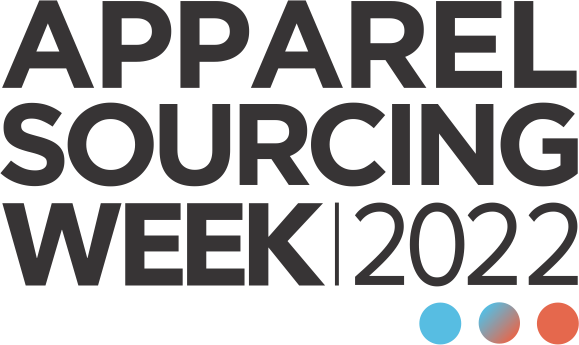News and Features
Fila tapping Indian market via regions
14 February 2019
Apparel Resources

In a short span, the global sportswear retailer Fila has carved its way to over 1,200 counters across 350 large format stores, along with a distributor in every Indian states. Operated in India by Cravatex Brands Limited, Fila deals in footwear, apparel and soft accessories like bags, socks, caps, scarves, etc. for men and women.
In a candid chat with Team Apparel Online, Rakesh Kathayat and Abdon Lepcha, COO and Creative Head for Fila India, respectively, illustrated on the brand’s robust growth plans.
“We are in a multi-fold expansion mode and have allocated a larger budget for brand building. This year, we would see Fila flagship stores in top cities of the domestic market, with franchise-owned standalones in tier-II and III markets,” said Rakesh. “We are also looking at opening our retail stores with additional categories of exclusive merchandise being added to the existing product mix,” he added.

The brand is getting into a strategic alignment with Shoppers Stop, where it will be launching its Heritage line as part of shop-in-shop formats.
REBOOTING FOR THE DOMESTIC MARKET
For long, the sportswear segment has been dominated by the US. But with increasing fitness awareness, the need for sportswear brands has soared worldwide.
Attempting to capture a significant market share, Cravatex – a part of The Batra Group – is taking various measures from price definition to region-specific merchandise to tapping India’s growing sportswear and athleisure market and to expanding into the booming product category.
“We tailor our price points based on products, depending upon the channel segmentation strength. The brand has penetrated into smaller towns through MBOs at a starting price of Rs 1,999. At retailers such as Shoppers Stop and Central, we operate on the mid-price point. In our own stores or premium shop-in-shop counters, we observe the Heritage line, starting from Rs 3,999-16,000,” Kathayat explained.

The license-owned by Cravatex is unique and gives them flexibility to operate as per market requirements, which helps the brand to cater to the diverse consumers based in the tier-II, III markets as well.
“We incorporate location-specific merchandise - not only at the design level but also at the retail and sales department level. We map out the looks to capture each region and consumer segment across India,” Lepcha said, to which Kathayat added, “One big trend we have been seeing after launching the global product is that the price barrier has been broken and distributors from North (especially UP) and North-East regions are ready to accept good quality products at a higher price point.”
DESIGN, DEVELOPMENT & PRODUCTION
Cravatex is licensed to solely design, manufacture and distribute Fila merchandise across India, Sri Lanka, Nepal, Bhutan, Bangladesh and Pakistan. It also serves as an exclusive licensee for Fila in the Middle East and North Africa.
The team seeks design inspiration from its global partners like Fila in China, Korea and Brazil but lately it hired a local design agency. “… There is a design book that is approved by Fila globally, which is completely in line with international standards,” Kathayat corroborated.
Although the studios based in Shanghai and Korea, Fila India aims to ensure that the products are locally relevant. A major chunk of its sourcing is done from India, China and Bangladesh, among others.

Its UK Design Sector acts as a design source in accordance to which global discussions and interactions are taken up to ensure that the end product is on the same page.
Lepcha, on the other hand, begins the designing process for each season with market research that spans two seasons ahead. To put it in his own words, “We undertake cross-competition analysis and global trend forecasting, post which, research pertaining to an active mapping of the past season’s best and worst sellers is carried out. This procedure is followed by extensive internalised brainstorming sessions which finally lead to India-specific selections.”
“When we get the sign off on the product, we take it to the product development stage and the first sample takes 45-60 days to come out,” Lepcha explained, adding, “Following the test phase, selection and a sign off on the samples, we move into the final phase which is the trade show, where we present the collection to the internal customer first. For this, we hold both global and local buying camps.”
The locations for these shows are mostly fixed and the bookings are made a year in advance.

“We are sourcing from India as well, and occasionally tie up with Indian and Chinese factory owners, in collaboration with Fila US whose design centre is situated in China. From Bangladesh, we source apparels; we also have distributors there, and for knits, we have our factory,” Kathayat said. Further stating: “If there is a specific requirement for the Indian market, we try to meet it locally.”
The brand uses premium fabrics designed to incorporate the brand’s Italian craftsmanship, while allowing maximum flexibility and performance. Keeping sustainability in mind, its India’s design lab tests the use of multiple sustainable materials that are available locally.
The mothership Mumbai warehouse of Fila India operates and supplies to various distribution points across the country.
To tap into the Indian market, the brand continuously collaborates on exclusive limited edition capsule collections with e-tailers, Indian designers and brands. It recently ventured with Indian designer brand NorBlack NorWhite.

BEST PERFORMING LINES, FUTURE PLANS
With a licence for SAARC countries, Cravatex is aiming to expand in Bangladesh. They also have partners in Sri Lanka and Nepal. In the pipeline is a complete rebrand of their accessories segment, for which a recruitment process for a designated team in India is currently underway.
Going forward, a keen focus on creating a clear omnichannel environment has also been expressed.
Comments

